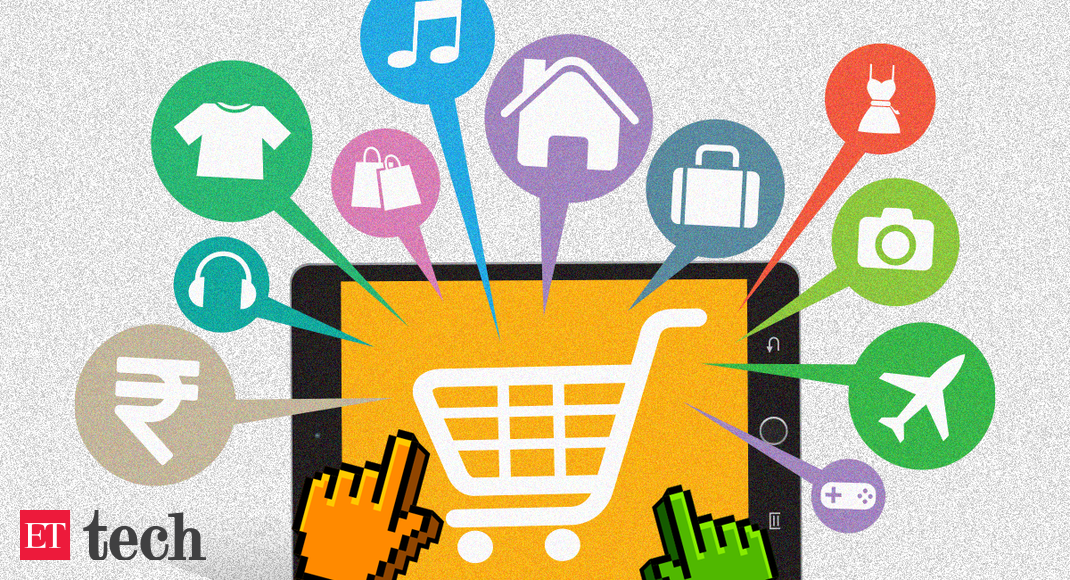SOCIAL
amazon ads: Amazon ads equals a minus for Google, Meta digital marketing reign

Advertisers, especially in categories such as consumer packaged goods as well as DTC (direct-to-consumer) brands, are moving as much as 15-20% of their advertising budget — previously dedicated to Google and Meta — towards the Seattle-based ecommerce giant’s ad tech suite.
In the US, platforms like Apple and TikTok, along with Amazon and Walmart in retail media, have shrunk Google and Meta’s share of digital ad dollars to less than 50% as of last year. With no TikTok back home and a single-digit percentage proliferation of Apple products to boot, Amazon Ads emerges as the single-biggest challenger to the duopoly in India.
In 2020, Amazon launched its global ‘demand-side platform’ (DSP) in India. Through Amazon DSP, advertisers can buy programmatic ads to reach new and existing audiences on and off Amazon. It combines data points from all its different properties, such as Prime Video, Fire TV, Kindle, Alexa, Audible, etc, to provide sharper audience segmentation.
“You can use it to create customer cohorts based on different spending sizes. Programmatic ads also prove more efficient and cost-effective compared to direct advertising/media-buying,” said Anil Pandit, senior vice-president at Publicis Media Services.
Today, five to six of 10 media plans at Publicis Media have some form of Amazon Ads targeting. “In the last year and a half, our clientele’s spending on Amazon Ads has gone up by 8-10x,” Pandit said.
Discover the stories of your interest
 ETtech
ETtechWavemaker, a GroupM company, now has an exclusive offering called Amazon Audience Galaxy, a planning stack for audience segmentation and cross-basket analysis. “For instance, it can give you data on what consumers bought last month across categories, or who are the people buying health products,” said Shekhar Banerjee, chief client officer and office head (west, north and east) at Wavemaker. “Map it out and you can market, say, sugar-free products to them. Refined data reduces noise. That’s a massive advantage and clients are lapping it up.”
With these developments, many industry experts reckon Amazon’s portion of the digital ad pie is likely to grow bigger in the next few years. Some homegrown DTC brands in the beauty and skincare segment are already spending 80% of their digital ad monies on Amazon, these executives added.
ET’s emailed queries to Google and Meta went unanswered. Amazon shared information on background.
How did we get here?
First, Amazon came for Google Search. The pandemic altered shopping habits and, according to a recent Counterpoint Research report, the number of people buying daily necessities online in India continues to grow. Therefore, “marketers realise that the only rival to Google search today is Amazon because people search on that platform with the intention to buy,” said Mayank Shah, senior category head of Parle Products.
While Parle Products doesn’t spend on Amazon Ads yet, a DTC brand it has invested in, called ASAP energy bars (part of WIMWI Foods), allocates ad monies towards Amazon Ads and has got a good response in terms of sales, said Shah. “If you’re a DTC consumer brand or selling inventory on Amazon already, it makes sense to spend on Amazon Ads,” he added.
L’Oréal India started listing its brands on Amazon around 2016-17 and began with display ads. “Slowly, we moved on to spending on search ads, since Amazon is a discovery-driven platform. Their offering has evolved significantly over time,” said Saloni Shah Javeri, chief digital and marketing officer at L’Oréal India. In 2021, the company started exploring Amazon DSP.
“The bulk of advertiser spends on Amazon is on search ads,” said Gautam Mehra, cofounder and chief executive of ProfitWheel, a customer data-led marketing intelligence platform. “90% of ad spend on Amazon is on ‘sponsored’ product ads you see in every category. Folks running these ads are from the e-sales teams. They report to the sales head and not the CMO. So, it’s very retail-led.”
Traditionally, advertisers have used Google and Meta for ‘upper funnel’ marketing that builds brand awareness. But given the economic headwinds and intense competition in consumer goods categories, more and more advertisers today are focusing on lower funnel marketing that is more sales-oriented, yielding short-term results.
Consumer packaged goods that sell more on the marketplace require advertising solutions for the lower funnel, “therefore many of them are cutting budgets from the top funnel and putting them into the mid and lower funnel,” said Banerjee of Wavemaker. “When their marketing budgets go up, the bulk of the incremental money is going towards lower funnel advertising, too.”
Retail media (like Amazon) is able to provide transactional patterns of users, aiding in lower funnel marketing that drives purchases, said Pandit of Publicis Media. “It allows marketers to also close the funnel measurement loop to a large extent as they are able to track spending leading to sales, which is still the biggest challenge for them.”
Given the size of their social and messaging platforms like YouTube and WhatsApp, Google and Meta do provide a whole host of behavioural user data to advertisers. But they lag behind Amazon in providing user’s transactional patterns to advertisers. “Google takes you directly to the product site. Meta offers Instagram checkout in the US but that’s not available in India as yet. If a transaction starts happening on their payment gateways, it’ll close the loop on the transaction,” said Mehra of ProfitWheel.
Going forward, “the ecommerce ecosystem as a whole could be a big threat to Google and Meta because neither of them has a marketplace equivalent,” said Banerjee of Wavemaker. “But you see them coming up with strategies to combat this threat. For instance, Facebook is tying up with smaller marketplaces now to strengthen its media buying offering.”
Homegrown ecommerce companies are also building a programmatic platform like Amazon DSP to grab their share of the ad dollars likely to go towards retail media in the next few years.
That said, not everyone needs to sell on the marketplace either. “So, sectors like realty, auto and BFSI don’t need to spend on Amazon Ads right now,” said Banerjee.
Further, “Amazon offers great consumer shopping signals but not at the scale that a Facebook, WhatsApp or YouTube can provide because of their much higher active user base,” said a digital marketing professional, requesting anonymity. “It’s also cheaper to target a much larger audience through Google and Meta because of their lower media-buying rates.”
Ultimately, “monies will always be deployed depending on a brand and business objectives,” said Javeri of L’Oréal India. “Our loyalties lie with the consumer. When a single platform will drive content discovery to product fulfilment within a native environment giving the best consumer experience, investments will move like this (snaps fingers).”
SOCIAL
12 Proven Methods to Make Money Blogging in 2024

 This is a contributed article.
This is a contributed article.
The world of blogging continues to thrive in 2024, offering a compelling avenue for creative minds to share their knowledge, build an audience, and even turn their passion into profit. Whether you’re a seasoned blogger or just starting, there are numerous effective strategies to monetize your blog and achieve financial success. Here, we delve into 12 proven methods to make money blogging in 2024:
1. Embrace Niche Expertise:
Standing out in the vast blogosphere requires focus. Carving a niche allows you to cater to a specific audience with targeted content. This not only builds a loyal following but also positions you as an authority in your chosen field. Whether it’s gardening techniques, travel hacking tips, or the intricacies of cryptocurrency, delve deep into a subject you’re passionate and knowledgeable about. Targeted audiences are more receptive to monetization efforts, making them ideal for success.
2. Content is King (and Queen):
High-quality content remains the cornerstone of any successful blog. In 2024, readers crave informative, engaging, and well-written content that solves their problems, answers their questions, or entertains them. Invest time in crafting valuable blog posts, articles, or videos that resonate with your target audience.
- Focus on evergreen content: Create content that remains relevant for a long time, attracting consistent traffic and boosting your earning potential.
- Incorporate multimedia: Spice up your content with captivating images, infographics, or even videos to enhance reader engagement and improve SEO.
- Maintain consistency: Develop a regular publishing schedule to build anticipation and keep your audience coming back for more.
3. The Power of SEO:
Search Engine Optimization (SEO) ensures your blog ranks high in search engine results for relevant keywords. This increases organic traffic, the lifeblood of any monetization strategy.
- Keyword research: Use keyword research tools to identify terms your target audience searches for. Strategically incorporate these keywords into your content naturally.
- Technical SEO: Optimize your blog’s loading speed, mobile responsiveness, and overall technical aspects to improve search engine ranking.
- Backlink building: Encourage other websites to link back to your content, boosting your blog’s authority in the eyes of search engines.
4. Monetization Magic: Affiliate Marketing
Affiliate marketing allows you to earn commissions by promoting other companies’ products or services. When a reader clicks on your affiliate link and makes a purchase, you get a commission.
- Choose relevant affiliates: Promote products or services that align with your niche and resonate with your audience.
- Transparency is key: Disclose your affiliate relationships clearly to your readers and build trust.
- Integrate strategically: Don’t just bombard readers with links. Weave affiliate promotions naturally into your content, highlighting the value proposition.
5. Display Advertising: A Classic Approach
Display advertising involves placing banner ads, text ads, or other visual elements on your blog. When a reader clicks on an ad, you earn revenue.
- Choose reputable ad networks: Partner with established ad networks that offer competitive rates and relevant ads for your audience.
- Strategic ad placement: Place ads thoughtfully, avoiding an overwhelming experience for readers.
- Track your performance: Monitor ad clicks and conversions to measure the effectiveness of your ad placements and optimize for better results.
6. Offer Premium Content:
Providing exclusive, in-depth content behind a paywall can generate additional income. This could be premium blog posts, ebooks, online courses, or webinars.
- Deliver exceptional value: Ensure your premium content offers significant value that justifies the price tag.
- Multiple pricing options: Consider offering tiered subscription plans to cater to different audience needs and budgets.
- Promote effectively: Highlight the benefits of your premium content and encourage readers to subscribe.
7. Coaching and Consulting:
Leverage your expertise by offering coaching or consulting services related to your niche. Readers who find your content valuable may be interested in personalized guidance.
- Position yourself as an expert: Showcase your qualifications, experience, and client testimonials to build trust and establish your credibility.
- Offer free consultations: Provide a limited free consultation to potential clients, allowing them to experience your expertise firsthand.
- Develop clear packages: Outline different coaching or consulting packages with varying time commitments and pricing structures.
8. The Power of Community: Online Events and Webinars
Host online events or webinars related to your niche. These events offer valuable content while also providing an opportunity to promote other monetization avenues.
- Interactive and engaging: Structure your online events to be interactive with polls, Q&A sessions, or live chats. Click here to learn more about image marketing with Q&A sessions and live chats.
9. Embrace the Power of Email Marketing:
Building an email list allows you to foster stronger relationships with your audience and promote your content and offerings directly.
- Offer valuable incentives: Encourage readers to subscribe by offering exclusive content, discounts, or early access to new products.
- Segmentation is key: Segment your email list based on reader interests to send targeted campaigns that resonate more effectively.
- Regular communication: Maintain consistent communication with your subscribers through engaging newsletters or updates.
10. Sell Your Own Products:
Take your expertise to the next level by creating and selling your own products. This could be physical merchandise, digital downloads, or even printables related to your niche.
- Identify audience needs: Develop products that address the specific needs and desires of your target audience.
- High-quality offerings: Invest in creating high-quality products that offer exceptional value and user experience.
- Utilize multiple platforms: Sell your products through your blog, online marketplaces, or even social media platforms.
11. Sponsorships and Brand Collaborations:
Partner with brands or businesses relevant to your niche for sponsored content or collaborations. This can be a lucrative way to leverage your audience and generate income.
- Maintain editorial control: While working with sponsors, ensure you retain editorial control to maintain your blog’s authenticity and audience trust.
- Disclosures are essential: Clearly disclose sponsored content to readers, upholding transparency and ethical practices.
- Align with your niche: Partner with brands that complement your content and resonate with your audience.
12. Freelancing and Paid Writing Opportunities:
Your blog can serve as a springboard for freelance writing opportunities. Showcase your writing skills and expertise through your blog content, attracting potential clients.
- Target relevant publications: Identify online publications, websites, or magazines related to your niche and pitch your writing services.
- High-quality samples: Include high-quality blog posts from your site as writing samples when pitching to potential clients.
- Develop strong writing skills: Continuously hone your writing skills and stay updated on current trends in your niche to deliver exceptional work.
Conclusion:
Building a successful blog that generates income requires dedication, strategic planning, and high-quality content. In today’s digital age, there are numerous opportunities to make money online through blogging. By utilizing a combination of methods such as affiliate marketing, sponsored content, and selling digital products or services, you can leverage your blog’s potential and achieve financial success.
Remember, consistency in posting, engaging with your audience, and staying adaptable to trends are key to thriving in the ever-evolving blogosphere. Embrace new strategies, refine your approaches, and always keep your readers at the forefront of your content creation journey. With dedication and the right approach, your blog has the potential to become a valuable source of income and a platform for sharing your knowledge and passion with the world, making money online while doing what you love.
Image Credit: DepositPhotos
SOCIAL
Snapchat Explores New Messaging Retention Feature: A Game-Changer or Risky Move?

In a recent announcement, Snapchat revealed a groundbreaking update that challenges its traditional design ethos. The platform is experimenting with an option that allows users to defy the 24-hour auto-delete rule, a feature synonymous with Snapchat’s ephemeral messaging model.
The proposed change aims to introduce a “Never delete” option in messaging retention settings, aligning Snapchat more closely with conventional messaging apps. While this move may blur Snapchat’s distinctive selling point, Snap appears convinced of its necessity.
According to Snap, the decision stems from user feedback and a commitment to innovation based on user needs. The company aims to provide greater flexibility and control over conversations, catering to the preferences of its community.
Currently undergoing trials in select markets, the new feature empowers users to adjust retention settings on a conversation-by-conversation basis. Flexibility remains paramount, with participants able to modify settings within chats and receive in-chat notifications to ensure transparency.
Snapchat underscores that the default auto-delete feature will persist, reinforcing its design philosophy centered on ephemerality. However, with the app gaining traction as a primary messaging platform, the option offers users a means to preserve longer chat histories.
The update marks a pivotal moment for Snapchat, renowned for its disappearing message premise, especially popular among younger demographics. Retaining this focus has been pivotal to Snapchat’s identity, but the shift suggests a broader strategy aimed at diversifying its user base.
This strategy may appeal particularly to older demographics, potentially extending Snapchat’s relevance as users age. By emulating features of conventional messaging platforms, Snapchat seeks to enhance its appeal and broaden its reach.
Yet, the introduction of message retention poses questions about Snapchat’s uniqueness. While addressing user demands, the risk of diluting Snapchat’s distinctiveness looms large.
As Snapchat ventures into uncharted territory, the outcome of this experiment remains uncertain. Will message retention propel Snapchat to new heights, or will it compromise the platform’s uniqueness?
Only time will tell.
SOCIAL
Catering to specific audience boosts your business, says accountant turned coach

While it is tempting to try to appeal to a broad audience, the founder of alcohol-free coaching service Just the Tonic, Sandra Parker, believes the best thing you can do for your business is focus on your niche. Here’s how she did just that.
When running a business, reaching out to as many clients as possible can be tempting. But it also risks making your marketing “too generic,” warns Sandra Parker, the founder of Just The Tonic Coaching.
“From the very start of my business, I knew exactly who I could help and who I couldn’t,” Parker told My Biggest Lessons.
Parker struggled with alcohol dependence as a young professional. Today, her business targets high-achieving individuals who face challenges similar to those she had early in her career.
“I understand their frustrations, I understand their fears, and I understand their coping mechanisms and the stories they’re telling themselves,” Parker said. “Because of that, I’m able to market very effectively, to speak in a language that they understand, and am able to reach them.”Â
“I believe that it’s really important that you know exactly who your customer or your client is, and you target them, and you resist the temptation to make your marketing too generic to try and reach everyone,” she explained.
“If you speak specifically to your target clients, you will reach them, and I believe that’s the way that you’re going to be more successful.
Watch the video for more of Sandra Parker’s biggest lessons.
-

 PPC6 days ago
PPC6 days agoHow the TikTok Algorithm Works in 2024 (+9 Ways to Go Viral)
-

 SEO5 days ago
SEO5 days agoHow to Use Keywords for SEO: The Complete Beginner’s Guide
-

 MARKETING6 days ago
MARKETING6 days agoHow To Protect Your People and Brand
-

 MARKETING4 days ago
MARKETING4 days agoAdvertising on Hulu: Ad Formats, Examples & Tips
-

 MARKETING4 days ago
MARKETING4 days agoUpdates to data build service for better developer experiences
-

 MARKETING5 days ago
MARKETING5 days agoThe Ultimate Guide to Email Marketing
-

 MARKETING20 hours ago
MARKETING20 hours ago18 Events and Conferences for Black Entrepreneurs in 2024
-

 SEO7 days ago
SEO7 days agoAutomate Multi-Site Reporting With Google Sheets And GSC API














